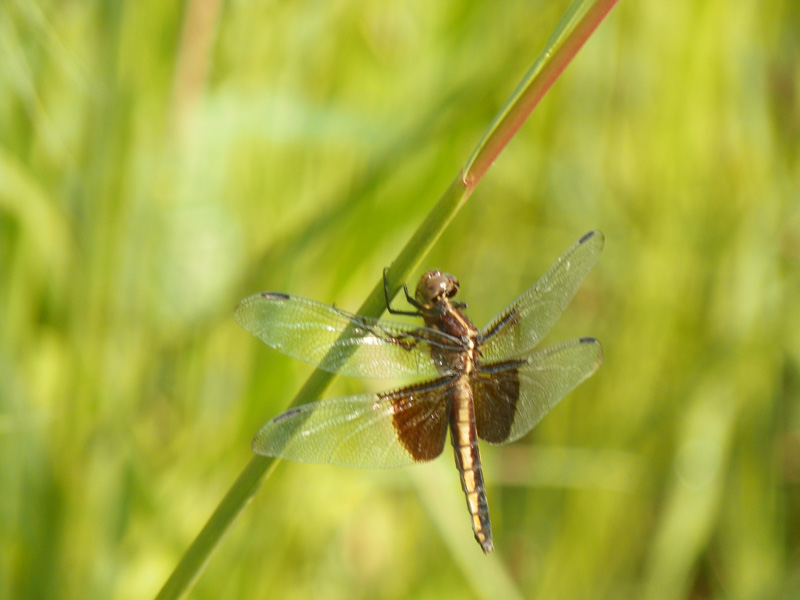
Phenology at the Ney Nature Center
Are you observant? If you are, you might be interested in helping us out with our phenological calendar. Phe-nol-o-gy is the study of changes in plants and animals as they respond to weather, climate, and the seasons. Each spring we anxiously await the first returning robin in the hope of warmer weather. That is a phenological event. It happens every year but the return date depends a lot on the weather. Migration and flowering are two more examples of phenological events. You can make observations at the Ney Nature Center and share them with us using Facebook and iNaturalist. Below is a monthly list of phonological events to look for but all observations are a part of phenology, so don’t limit what you are reporting to what is on the list!
We will be using this page to create species lists for the Ney Nature Center! Check back as we build the lists and observations!
May
- Usually the green-up, blooming (allergies), leaf-out, nature babies’ month!
- PLANTS & TREES: Blooming? Lilacs, wild plums, crabapple & apple trees early in the month followed by chokecherry & black locust. Woodland flowers are flowering – various violets, wild blue phlox, white trout-lily, columbine, Jack-in-the-pulpit, large yellow lady’s slipper. Deciduous trees leafing out – oaks, maples & butternut; woody plants – poison ivy, wild grape & staghorn sumac.
- BIRDS: Returning to backyard feeders – rose-breasted grosbeaks, Baltimore orioles, ruby-throated hummingbird, chimney swift, indigo bunting, ovenbird, purple martins, & a huge variety of warblers are passing through. Nest building – red-winged blackbird, barn swallow, Baltimore oriole. Keeping eggs warm – ring-necked pheasant, blue jay, Northern cardinal, black-capped chickadee.
- NATURE BABIES: White-tailed deer fawns born, young grey squirrels exploring, red fox kits playing, baby woodchucks & Eastern chipmunks are out & about, & lots of baby birds!
- CROPS: Planted – corn, soybeans, spring wheat, potatoes, sugar beets, squash, melons. Harvested – asparagus, rhubarb, lettuce, radishes, green onions, first cutting of alfalfa.
June
- Brake for crossing nesting season turtles (May & June)!
- Summer Solstice, June 21 – longest daylight hours & shortest nighttime.
- BLOOMING FLOWERS: Roses, double peonies, blue flag, prairie smoke, white water lilies, Dutch white clover, lupines, coral bells, columbine, Indian paintbrush, lady slippers, Culver’s root, lead plant, purple prairie clover, ox-eyed daisy, common milkweed, Canada thistle, tawny daylily, butterfly weed, black-eyed Susan, prairie phlox, Northern bedstraw, prickly pear, yellow sweet clover, new cattail flower heads, poison ivy & wild grapes.
- BIRDS: Cedar waxwings building nests, mourning doves sitting on eggs, baby loons riding on their parents back, young red-tailed hawks ready to fly; tree swallows, barn swallows, red-winged blackbirds, Baltimore orioles, & purple martins feeding their young; wood duck ducklings emerging from their nest boxes or cavities, hairy & downy woodpeckers bringing their young to suet feeders, chimney swifts are nesting, & Eastern bluebirds starting their second broods. Wild turkey hens have their young (poults) with them. Songbirds return – song sparrows, warbling vireos, house wrens, & common yellow throats.
- OTHER ANIMALS: Juvenile Eastern chipmunks, 13-lined ground squirrels, striped skunks, & gray squirrels exploring their world; white-tailed deer having fawns; young American toads & Northern leopard frogs leaving the water. Butterfly activity – tiger swallowtails, monarchs (2012 saw caterpillars on the 1st of the month), red admirals, & mourning cloaks flying around. Flying insects – black flies, stable flies, horse flies, deer flies, mosquitoes, honeybees, & Luna moths are out.
July
- BLOOMING PLANTS: Purple loosestrife, thimbleweed, cow parsnip, white sweet clover, common mullein, butter-&-eggs, sunflowers, hostas, wild bergamot, hollyhocks, garden daylilies, purple coneflowers, Joe-pye weed, boneset, blue vervain, arrowhead, grey-headed coneflower, spotted & pale touch-me-not, wild rice, common tansy, wild cucumber, early goldenrods, jewelweed, & big bluestem grass.
- FRUITS: Ripe & turning red – wild gooseberry, red mulberry, black-cap raspberry, choke cherry, Tartarian honeysuckle berry & staghorn sumac fruit. Pumpkin – starting to turn orange.
- HARVESTING: New potatoes, raspberries cherries, tomatoes, sweet corn, apricots, early apples & various melons.
- BIRDS: Feeding young birds: Canada thistle seeds (gold finches), sunflower seeds (black-capped chickadees), Baltimore orioles bring their young to grape jelly & sugar water feeders, barn swallows are fledging, purple martins & bluebird nestlings being feed, & sugar water feeders are attracting ruby-throated hummingbirds, red-headed woodpeckers, & yellow-bellied sapsuckers. Nesting season is almost over – red-winged blackbirds & grackles forming flocks. Canada geese are flying after molting. Osprey young fairly large yet remain in their nests.
- INSECTS: First cicada will be heard soon (three more months before the first frost). Yellow jackets, flying Carolina grasshoppers, & snowy tree crickets (calling) are out. Monarch butterflies laying eggs on milkweeds.
- TREES: butternut trees begin to turn yellow (the first woody plant to show its fall color); bur & red oak start losing acorns.
